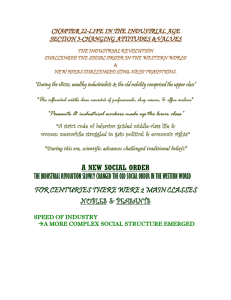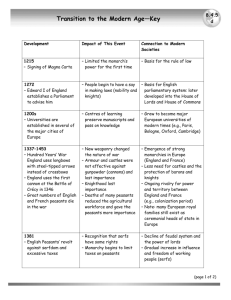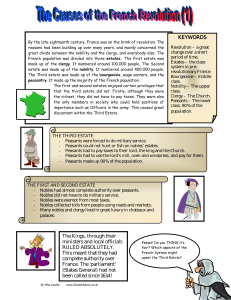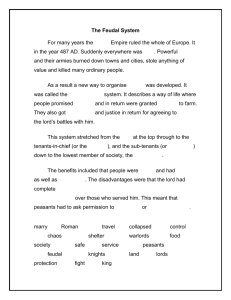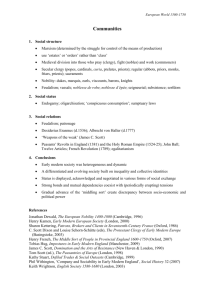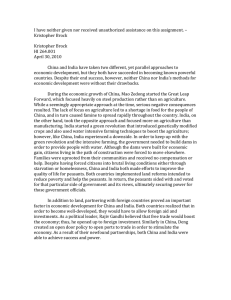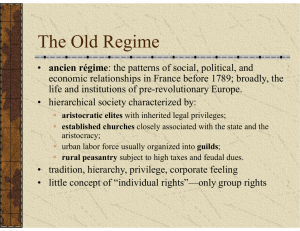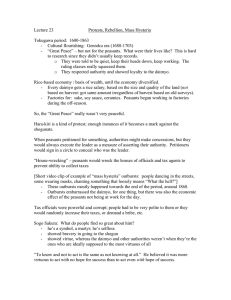File
advertisement
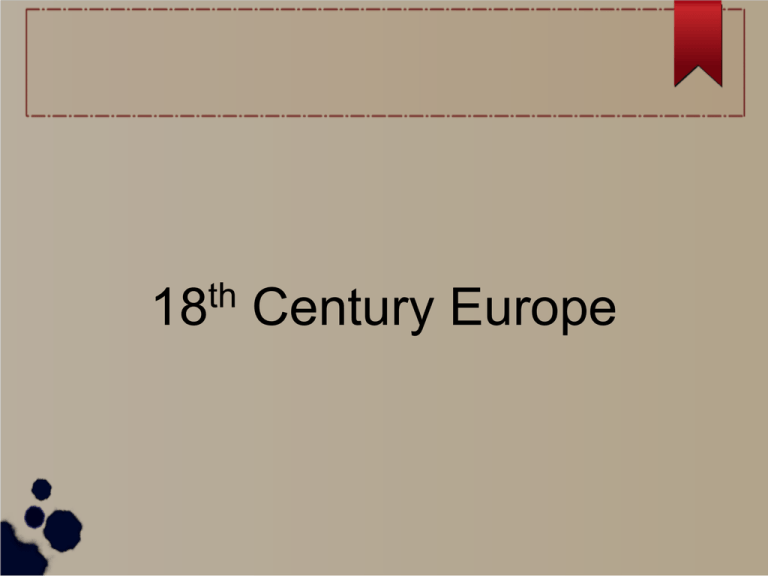
th 18 Century Europe The Social Order 18th Century Europe was a very class conscious society A great landowner could do as he pleased during the later half of the century The social structure was marked by birth into your estate (France) or order This order marked not only your identity, but also your privileges and responsibility Nobility Making up about 2-3% (more common in Eastern Europe and Spain) this was the most privileged order As a noble you were exempt from most taxes You could pass on your title to your first son They dominated political life Owned land but did not work Made money from peasants and their seigneurial dues Peasants had to show deference to nobles as they The Clergy Although technically an estate the clergy were separated into two parts, wealthy clergy and priests Immune from taxes The bishops and higher clergy came from the nobility and were not pious Local priests were very important in local affairs Bourgroisie Traders, artisans, craftsman, innkeepers, lawyers small merchants and manufacturers Many would try and purchase land and titles 1/3 of Western Europe was owned by these Often looked down on by nobles Growing in power Peasants Between 75-90% of the people were peasants Through them the nobles maintained wealth The village was the center of the peasant's life Folklore would celebrate peasant wisdom, but they were considered lower than human by the nobility Rural industry often brought extra money Debt was common The landless poor traveled as migrant workers Serfdom was abolished in Western Europe but lords could still issue justice Peasants Continued The further East, the worse it was Peasants would resist, and sometimes revolt Pugachev's “Peter III” All revolts were put down with brutality

